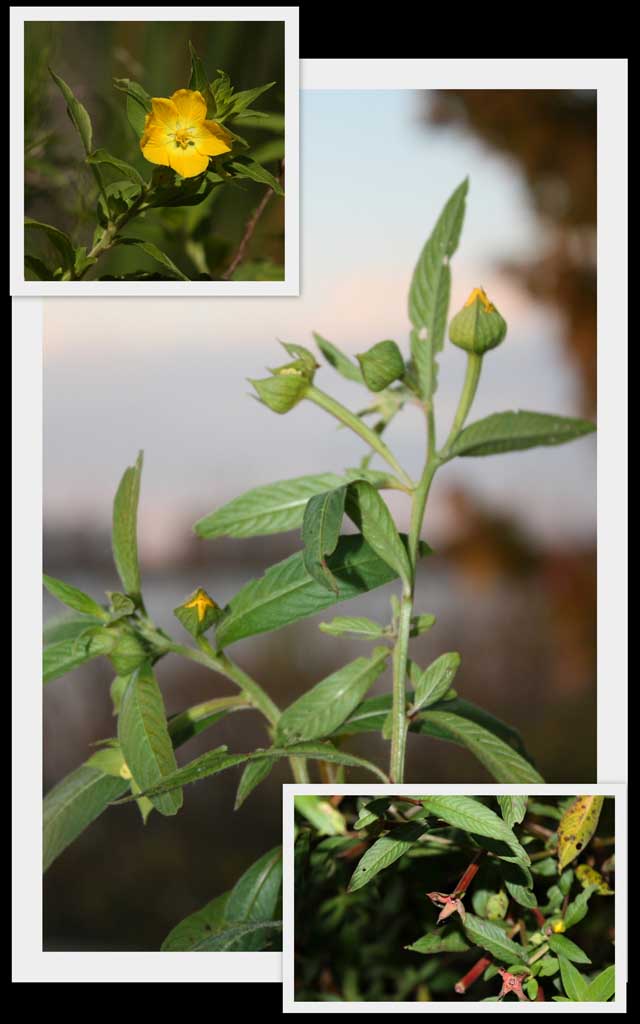Ludwigia peruviana
Ludwigia peruviana
mm
Linnaeus

Ludwigia peruviana, courtesy of Shaina Noggle.
This site has been created by
Bill Oehlke at oehlkew@islandtelecom.com
Comments, suggestions and/or additional information are welcomed by Bill.
| TAXONOMY:
Superfamily: Sphingoidea, Dyar, 1902
Family: Sphingidae, Latreille, 1802
Subfamily: Macroglossinae, Harris, 1839
Tribe: Philampelini, Burmeister
Genus: Eumorpha, Hubner, [1807]
Species: fasciatus fasciatus, (Sulzer, 1776) |
MIDI MUSIC
"What.A.Wonderful.World"
copyright C. Odenkirk
MIDI CITY
ON.OFF
<bgsound src="world.mid" LOOP=FOREVER>
|
Ludwigia peruviana serves as a larval host for Eumorpha fasciatus the Banded Sphinx Moth.
L. peruviana is a wetland species that has been introduced into North America and elsewhere as an ornamental for its bright yellow and showy flowers.
Once established, however, it can form dense, stands along shorelines and banks. It then begins to sprawl out into the water and can clog waterways,
damage structures and dominate native vegetation.
This perennial grows to 3 and 4 metres in wet areas. It reproduces by seed. Stems are brownish green, heavily branched, and hairy when young.
The leaves are alternate, rarely opposite, ovate, 5 to 10cm long, 1 to 3cm wide, and hairy. The solitary flowers are bright yellow and quite showy and bisexual,
2 to 4cm in diameter, but the 4 (-5) petals last for only a day. There are 4 pale green sepals that are typically 8 to 12mm long, and petals 1 to 3cm long and
wide.
Use your browser "Back" button to return to the previous page.
Return to U. S. A. Table
Return to Philampelini Index
Return to Sphingidae Index
Use your browser "Back" button to return to the previous page.
This page is brought to you by
Bill Oehlke and the
WLSS. Pages are on space rented from Bizland. If you would like
to become a "Patron of the Sphingidae Site", contact Bill.
Please send sightings/images to Bill. I will do my best to respond to
requests for identification help.
Enjoy one of nature's wonderments: Live
Saturniidae (Giant Silkmoth) cocoons.
 | 
Show appreciation for this site by clicking on flashing butterfly to the left.
The link will take you to a page with links to many insect sites. |


